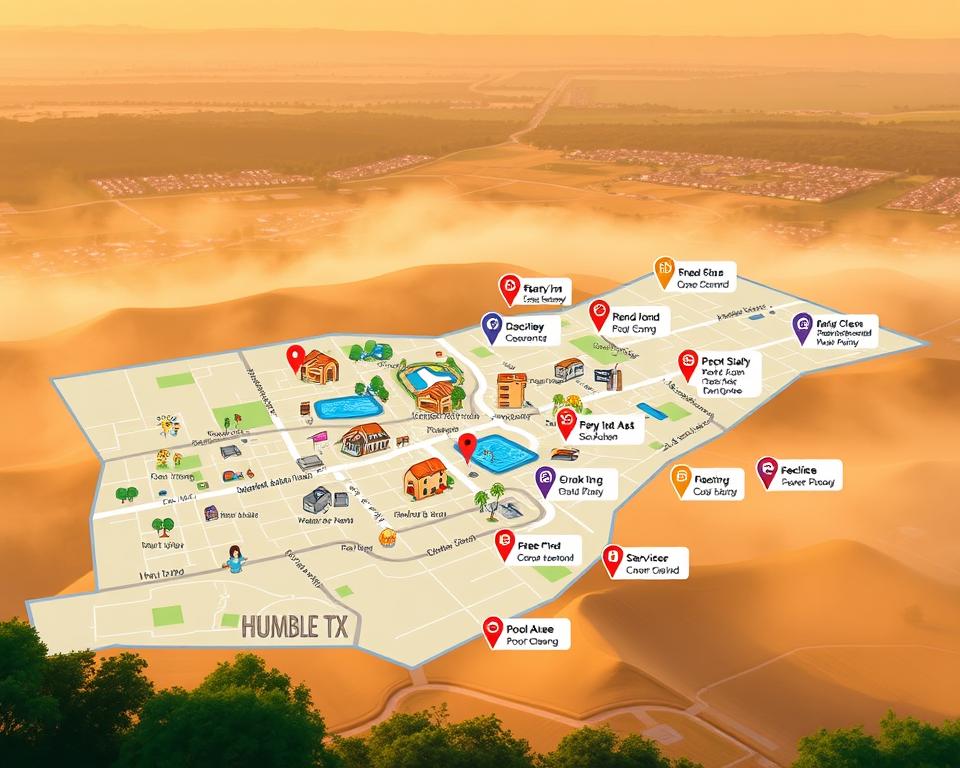Humble TX Pool Cleaning – Expert Pool Maintenance Services
Fun fact about 70% of homeowners who choose weekly maintenance report reduced equipment issues and clearer water within the first few weeks.
Silver Arrow 6 Pools is your friendly team that makes ownership simple for households in the Humble area. We create service schedules around your life and budget, so pool building Humble Tx works with your schedule.
Our recurring plans include proper water balance, minerals, system checks, and routine upkeep, with a water balance guarantee and an dedicated technician who delivers a written service summary after each visit.
From skimming and brushing to professional testing and friendly guidance, we emphasize steady communication and continuity. That delivers fast answers, a seamless start-up, and the confidence that your backyard centerpiece gets professional care every visit.
- Silver Arrow 6 Pools offers consistent weekly service aligned to your calendar.
- Every visit provides testing, treatment, and a written checklist.
- An assigned technician provides consistency and transparent updates.
- Water treatment is backed to defend users and equipment.
- Knowledge of local conditions matches local climate and water.
Silver Arrow 6 Pools: Trusted Local Experts for a Crystal-Clear Swimming Pool
Count on Silver Arrow 6 Pools for steady, skilled attention that works with your time and your backyard.
As a trusted service company in the area, Silver Arrow 6 Pools operates residential and commercial weekly routes across Humble. Our regular technicians use a standardized checklist and deliver a written report at every visit.

Trusted service company in the area
We are familiar with local water and weather patterns, so our expert team tailors treatments to keep your swimming pool clean and clear. This customer-first company handles every visit with care and respect for your property.
Residential and commercial care tailored to your backyard
Plans suit compact spaces, larger estates, community amenities, and apartment facilities. Our Humble-favorite services include scheduled testing, surface cleaning, and prompt updates so maintenance is straightforward.
| Service Type | Frequency | Same Technician | Documentation |
|---|---|---|---|
| Residential weekly | Once per week | Provided | Service summary & notes |
| Community and commercial | Weekly schedule | Included | Regulatory checklist |
| Seasonal add-ons | On demand | Yes | Scope and suggestions |
Why Choose Our Pool Cleaning and Maintenance in Humble
Our team offers steady, skilled attention so your family can enjoy safe, clean water without added stress. We pair professional-grade products with transparent reporting to keep things easy for your home.
We use professional chemicals and minerals on every visit to ensure water stays balanced and swimmer-friendly. That assurance means we fix water balance and back the outcome.
Same technician weekly with a written report
An assigned technician gets to know your system and provides a written summary every week. You get transparent notes on tests, treatments, and suggested follow-ups so you always know what was done.
Service choices tailored to your time and needs
Choose full service, partial plans, or cooperative options where we handle key tasks and you cover the remainder. Our approach to pool maintenance emphasizes prevention and scheduled checks to reduce major repair risks.
| Service Element | When | Backed By | Details |
|---|---|---|---|
| Water chemicals and minerals | Each visit | Guaranteed balanced water | Helps comfort and extends equipment life |
| Dedicated technician | Week to week | Consistent technician | Written report and follow-ups |
| Plan flexibility | Per need | Multiple options available | Aligned to how you use the pool |
We welcome feedback and reviews to keep refining our service. Look forward to transparent communication, reliable scheduling, and no guesswork so you can kick back while we handle the work.
Pool Cleaning in Humble, TX Services That Fit Your Life
Flexible plans help you to keep your backyard guest-ready without additional effort.
Full Service: Skimming, vacuuming, treatment, equipment inspection
Opt for Full Service for end-to-end cleaning that covers netting and vacuuming, water treatment with pro-grade chemicals and minerals, and regular equipment checks. Our technicians use a step-by-step checklist so your system runs smoothly and stays ready for guests.
Partial Service: Essentials only with you handling the rest
Partial Service is a practical cleaning service when you handle netting and vacuuming. We handle testing, balancing, and basic maintenance so your water stays clean and swimmer-safe.
Spa add-ons and seasonal care for peak swimming months
Add spa service to keep spa and pool aligned. Peak-season boosts prepare your system for heavy use in peak swimming months and help transition smoothly out of them.
“Our team will explain options, recommend a plan, and adjust as your needs evolve.”
We fit services to your goals so you pay only for what helps your backyard shine. Count on dependable care that gives you time back while we maintain clear, attractive water and equipment running well.
Weekly Service Process: Clear and Consistent
We use a clear, repeatable method each week to maintain system performance and surfaces clean and presentable.
Comprehensive testing and a customized treatment plan
We start each visit with accurate testing to measure current chemistry. That data drives a tailored treatment plan for your water that week.
Skim, brush, vacuum, plus filter care
Your assigned technician completes skimming, brushing, and vacuuming per your service plan. We include filter care to help the system circulate efficiently between visits.
Equipment checks that prevent larger problems
Technicians examine pumps, valves, and heaters to catch early signs of wear. Quick fixes or recommendations help you save time and avoid costly repairs down the road.
- Visit starts with testing and ends with a clear maintenance report.
- All work is documented: readings, chemistry added, tasks done.
- We adjust service for seasonal shifts to keep stability over time.
- Consistency produces steady results and extra free time.
Pricing Factors, Plans, and Transparent Quotes
See clear options and receive a quick quote that matches your calendar and budget.
Monthly rates change by dimensions, special features, and how much yard debris reaches your water. We consider pool size, whether you have an attached spa, and nearby trees or shrubs to provide realistic expectations.
Pool size, spa presence, and landscaping
Large surfaces or an attached spa add time and materials. Landscaped yards with heavy leaf drop require more attention for clarity. We factor these elements into every quote so there are no surprises.
Visit frequency, equipment age, and special features
How often we visit and the age of your equipment impact cost. Water features, waterfalls, and special finishes also add scope and time.
Request a quick, friendly Humble quote
Silver Arrow 6 Pools provides fast, friendly quotes with clear plan choices. Both plans include cleaning, maintenance, chemicals and minerals, a water balance guarantee, and an allocated tech who leaves a maintenance report.
- Clear pricing using size, spa, and debris factors.
- Plan comparison shows what each option includes so you can decide.
- Rapid replies and a no-obligation quote.
Where We Serve in and around Humble, TX
From suburban yards to community facilities, we run weekly routes that focus on on-time service and steady results.
We proudly serve neighborhoods across the area, bringing dependable care to each address.
Areas we cover across Humble
- Bala Woods; Canyon Village; Cypresswood Lake; Kings Forest; Lakewood.
- Lexington Woods; Lexington Woods North; Mill Creek; North Hill Estates; Northgate Crossing.
- Ramblewood, Spring Park Village, Timber Lane, Villages of Spring Oaks.
Reliable routes and on-time technicians throughout the area
Our technicians use efficient routing so visits respect your time and come in a steady window each week.
Whether it’s a residence or a multi-resident facility, our company applies the same professional standards and approachable communication.
Local knowledge helps us anticipate foliage and weather effects on water quality. If your neighborhood doesn’t appear, contact us and we’ll check availability or the closest route.
Repairs, Parts, and Equipment Support Done Right
When equipment is noisy or losing flow, a focused inspection reveals the root cause fast.
Our experienced technicians conduct equipment checks weekly so issues are identified early. That delivers fewer surprises and quicker repairs for pumps, filters, heaters, and automatic cleaners.
Professional diagnostics for all major equipment
Our team performs targeted tests to identify issues and recommend the right repairs. Straightforward results let you decide quickly on tune-up vs repair.
Quality parts and products to keep your pool performing
We source matching parts and trusted products to restore performance and reduce repeat issues. Work is planned to reduce downtime and keep your backyard usable.
- Accurate diagnosis prevents needless part swaps and repairs.
- Your technician explains options in plain language and outlines costs.
- Proactive tips and minor updates can improve circulation and efficiency.
- Repairs come with documented steps for clarity.
Conclusion
Secure dependable weekly service so your water stays sparkling and your time is free.
Silver Arrow 6 Pools invites you to start with a fast quote and a simple path forward. Our service company delivers weekly care that can include chemicals, minerals, equipment checks, and a written maintenance report each week.
We tailor plans to your home, busy months, and backyard use. Count on friendly technicians who handle the work, answer questions, and provide transparent notes about pool water performance and maintenance needs.
Want your pool prepared for warm months? Reach out today to book your first visit and experience how easy pool cleaning and service can be.









